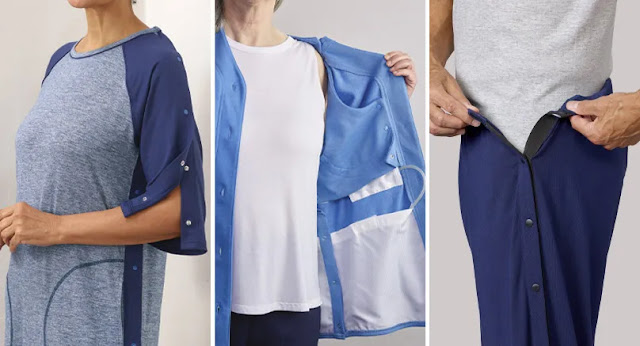Which Adaptive Clothing for Incontinence Is Right for You?
Living with incontinence can present unique challenges, but adaptive clothing has emerged as a practical solution to enhance comfort, dignity, and convenience for individuals facing this condition. Whether you're dealing with occasional leaks or managing a more persistent issue, choosing the right special needs adaptive clothing can make a significant difference in your daily life. In this blog, we'll explore the various options available and help you determine which adaptive clothing is right for you.
Before diving into adaptive clothing options, it's essential to understand the different types and severity levels of incontinence. Whether it's stress incontinence, urge incontinence, or functional incontinence, each type may require specific features in adaptive clothing. Consulting with a healthcare professional can help you identify your unique needs and guide your clothing choices accordingly.
Types of Adaptive Clothing:
Incontinence Underwear:
Disposable vs. Reusable: Consider your preferences and environmental concerns when choosing between disposable and reusable options. Reusable underwear is often more cost-effective and eco-friendly, while disposable ones offer convenience for travel and outings.
Adaptive Pants and Skirts:
Waterproof Fabrics: Look for clothing made from waterproof or water-resistant materials to prevent leaks and maintain discretion. Many adaptive pants and skirts are designed with discreet built-in protection layers.
Adaptive Dresses and Jumpsuits:
One-Piece Convenience: Dresses and jumpsuits designed for incontinence offer one-piece solutions that simplify dressing and undressing. Look for styles that are both functional and fashionable to boost your confidence.
Adaptive Bedding:
Waterproof Sheets and Mattress Protectors: Incontinence doesn't only affect daytime activities. Investing in waterproof bedding can protect your mattress and ensure a comfortable night's sleep.
Specialized Activewear:
For Active Lifestyles: If you lead an active lifestyle, explore adaptive activewear designed with moisture-wicking properties and discreet incontinence features. This ensures you can stay active without compromising comfort.
Considerations When Choosing Adaptive Clothing:
Absorbency Levels:
Assess the absorbency levels of different clothing options based on the severity of your incontinence. Some clothing items offer light protection for occasional leaks, while others are designed for more significant challenges.
Comfort and Style:
Prioritize comfort and personal style when selecting adaptive clothing. Many brands now offer stylish designs that don't compromise functionality, allowing you to feel confident and express your individuality.
Ease of Use:
Consider the ease of dressing and undressing. Adaptive clothing with features like velcro closures, elastic waistbands, and strategically placed zippers can simplify the process, especially for those with limited mobility.
Conclusion:
Choosing the right adaptive clothing for incontinence is a personal decision that depends on various factors, including the type and severity of incontinence, lifestyle, and personal preferences. By exploring the diverse options available and considering factors such as absorbency levels, comfort, style, and ease of use, you can find adaptive clothing that meets your specific needs and enhances your overall quality of life. Remember, consulting with healthcare professionals and trying different options will help you make informed decisions to ensure your comfort and confidence in managing incontinence.

Comments
Post a Comment